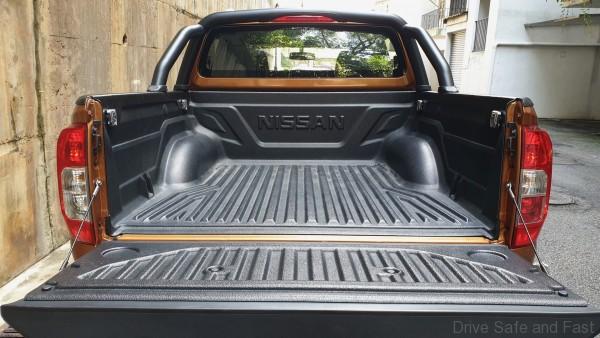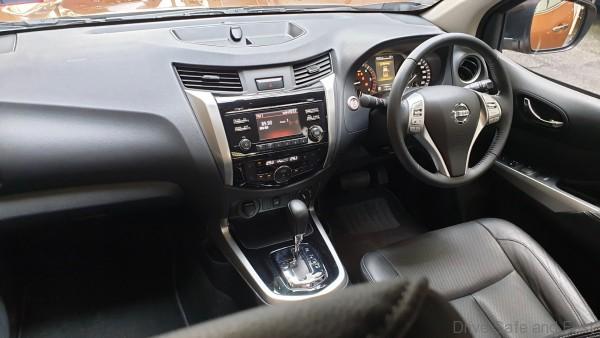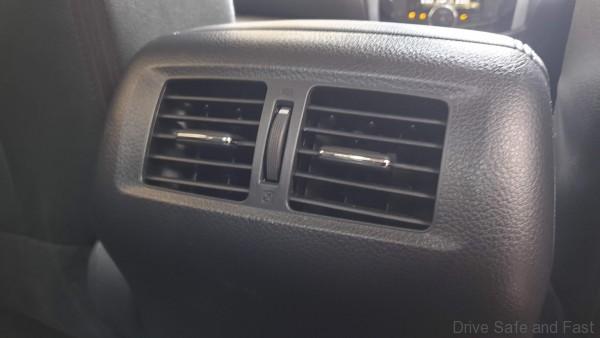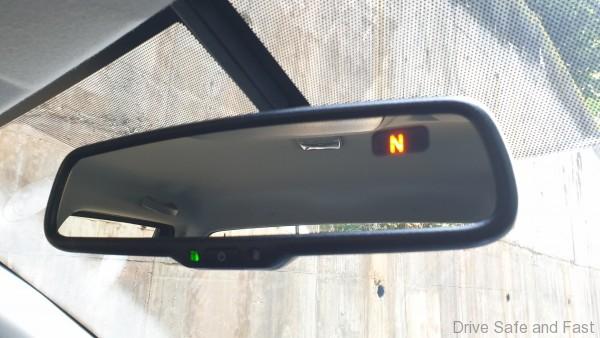The pick-up truck market in Malaysia can be divided in a number of ways. You could say it’s basically the indestructible Toyota Hilux versus every other pick-up truck. You could also say that Ford effectively divides the market between premium and mainstream options with their Ranger Wildtrak and Raptor models.

Of course, it’s much more complex than that. But what it boils down to is this: many pick-up trucks are often looked as interchangeable. Besides the Ranger, popular pick-up trucks in Malaysia are all sold by Japanese brands, they all feature 2.4-3.0L diesel engines with variable geometry turbochargers with 5-7 speed conventional automatic gearboxes. Sure they all offer something slightly different, but the nature of this sort of vehicle makes it tough for any one vehicle to stand out.
But after testing the VOTY 2019 award winning Ford Ranger Raptor and thoroughly enjoying its road behaviour, we began to ask ourselves if a passenger-friendly rear suspension could be enough to set a pick-up truck apart. So we contacted ETCM to try out their Navara.

Background on the Navara
Truth be told, the Nissan Navara NP300 isn’t that new. It was launched back in 2015 and we got a quick test drive right after launch. That drive was mostly through rough terrain, so we didn’t get to learn much. However, in 2016 Petronas took us on a drive to test out their new diesel grade. This drive had us drive and ride in the same Navara. We distinctly remember it being extremely comfortable. At the time, our experience with pick-up trucks was severely limited.

That being said, let’s set the expectations for this review up properly. We’re not going to talk about its off-road capability or its loading capacity. We’re also going to quickly glaze over its features and design details. We’re only concerned with how its unique multi-link rear suspension affects the vehicle’s qualities from an everyday driver’s perspective. But first…
Has it Changed in 2019?
Since the Navara’s initial launch, ETCM has added a ‘Black Series’ package. This adds a whole bunch of accessories designed to make the Navara look tougher and less chromed than it is out of the factory.

It’s an aesthetic that many (including us) appreciate and the quality of the accessories is reasonably high.

Here’s a list of Black Series accessories:
- matte headlight ‘eyelids’
- matte black front grille
- blackout front bumper
- matte black foglight covers
- matte black fender covers
- matte black side mirror cover
- black sports bar

It’s not easy to make 3rd party accessories look good, but we have to say they did a fine job here of putting these parts together in a presentable way.

On top of that, they’ve also given the Navara some goodies from their other passenger car lines. 7 SRS airbags, an all-around monitor, and Advanced Driver-Assist Display.

But back to the core of the Navara itself. Did it impress us?
In Short
Yes, actually.
In a bit more Detail
The whole reason we took the Navara out was to see if its rear suspension gave it an edge over other pick-ups with traditional leaf spring setups. And in this regard, it very obviously does.

Unlike its peers, the Navara does not bottom out easily and is not unsettled over tarmac surfaces. It has a certain sureness about it. Leaf springs certainly have their place in cargo carriers. But given that many pick-ups in Malaysia are used as passenger vehicles, leaf springs become a great hindrance to owners.

As a friend of the website, Bo suggests, humans become ‘meat-based shock absorbers’. The Nissan Navara’s use of multi-link rear suspension absolutely improves the vehicle’s behaviour. It’s not as comfortable as a typical monocoque-chassis passenger SUV, nor is it suited in any other way to that use. But compared to its pick-up rivals, it is noticeably better.

What’s more, there’s something genuinely pleasing about Nissan’s cabin design. There’s nothing overly sporty or luxurious about the way this interior is put together.

There’s no pretension here, only practicality. In many modern vehicles, attention-grabbing design usually takes priority. Nissan did things the traditional way to make owners happy using the car years after seeing it in the showroom.

Construction is solid, as any truck cockpit should be, and material choices are up to par with anything else in the segment.


A few niceties to take note of include rear air cond blowers, power adjustable zero gravity inspired seats and a compass in the rear view mirror.


All of these factors and features come together to make the Navara VL quite a compelling package as a ‘daily driver’ pick-up. As true as that is, we still have to ask…
Should you Buy a Nissan Navara to transport your family?
In Short
No, pick-up trucks are still not great for families.
In a bit more Detail
As good as this suspension is, and as well equipped as the Navara is, there are still many other elements that make the Navara (and all pick-up trucks) unsuited to the task of people moving. And this has nothing to do with the Navara or its rivals in particular. This is a problem that plagues just about every pick-up truck sold here:
- The high riding height makes it difficult to get in and out of. Transporting your parents, grandparents or children is going to be a bad experience.
- The rear bench is going to be cramped and suboptimal for long distances. Ergonomics in twin cabs always take a hit thanks to poor recline and space constraints.
- The hydraulic power steering is robust and communicative. While good for knowing what the tyres are doing on and off-road, it makes day-to-day driving a workout.
Again, these aren’t particular weaknesses of the Navara. Every Japanese pick-up truck bears these shortcomings.

If the Navara itself had a unique weakness it would be its delivery of low-end torque. Don’t get me wrong, this pick-up can be plenty quick with your foot to the floor. But when the vehicle just starts moving, you may need to get the revs up to 2500-3000. Once at cruising speed, the 7-speed conventional automatic (another highlight of the Navara), shifts up smoothly and willingly. At pace, the Navara can be quite quiet.

Conclusion
All in all, the Nissan Navara scores quite well. It actually stands out from its Japanese rivals with its equipment, comfort, and build quality. If we were to buy a new pick-up for ourself, it would certainly be a top contender. If there are any lessons to be learnt here, it’s that a 7-seater SUV built on these fundamentals would give the Toyota Fortuner some trouble.
Other Japanese manufacturers should also take note of what Nissan has done here. So many of your buyers in South East Asia never take their cars off-roading. Perhaps it’s time to offer more forgiving rear suspension.
Who should buy a Navara? There’s definitely a market out there for those looking for a rough-it-tough-it weekend car. If you’re using this for personal use and have something else around for the family, you could get away with it and be totally happy with the overall package.
Nissan Navara VL Specifications
Engine: Inline 4, VGT Diesel
Capacity: 2488cc
Gearbox: 7-speed Conventional Automatic
Max power: 187hp @ 3600rpm
Max torque: 450Nm @ 2000rpm
Price: RM 129,888.00
The product quality of Navara NP300 is terrible.Ive own a 2018 VL spec and the rubber attached to the car body at driver side is easily to get broken.
The Nissan after sales service is really bad.
Will not consider on Nissan anymore!